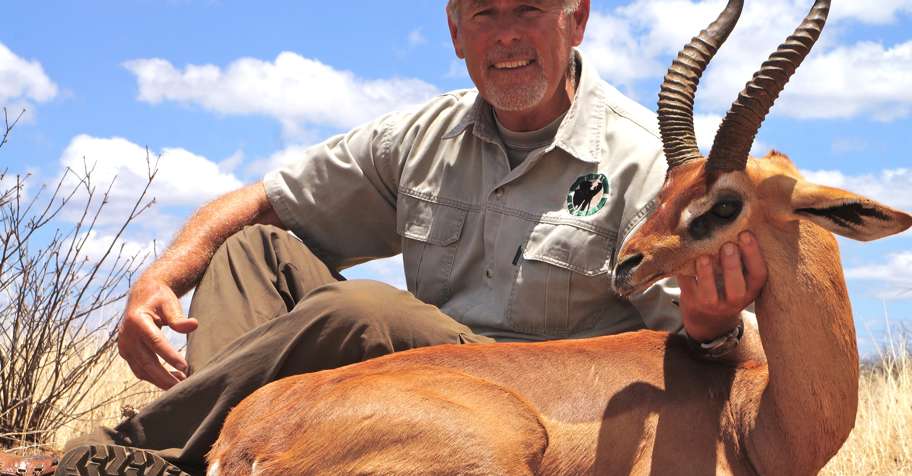
30
hunting trips
$5,530
starting from
5
outfitters
Where to hunt Suni
Suni are one of the smallest antelopes, and are prominent members of the “Tiny Ten” group. There are two subspecies: the East African suni, which occurs in Kenya, Tanzania and north of the Zambezi River in Mozambique, and the Livingstone’s suni, which can be hunted south of the Zambezi River in Mozambique, Eastern Zimbabwe and the Zululand region of KwaZulu-Natal Province of South Africa. If suni is your targeted species, the best place to hunt them in the Sand Forests of Eastern Mozambique.
Price distribution
In Tanzania, an East African suni may be hunted on a 16 or 21 day license. Daily rates for these safaris range from $1,650 – 1,950 per day with a trophy fee of approximately $500. In Mozambique you will be required to book a minimum of a 6-10 day hunt, with a daily rate of $600-$700, and pay a trophy fee of $995-1,600. If you hunt suni in Zululand, KwaZulu-Natal in South Africa, the trophy fees there range from $2,000-3,000 and daily rates between $350-450 per day.
$2,800
$23,350
$43,900
$64,450
$85,000
Suni Hunting in Southern and Eastern Africa
A member of the “Tiny 10”, this small antelope stands 12-17 inches high at the shoulder and weighs 10-12 pounds (4.5-5kgs). A dainty little specialty animal normally only hunted by the true collectors who are probably African hunting veterans by the time they decide to shoot one.
May 24, 2020
Suni Hunting in Southern and Eastern Africa
When to hunt Suni?
Suni may be hunted year round In South Africa and Zimbabwe. In Mozambique the season is open from April 1 to November 30. In Tanzania the season is from July to December. Suni inhabit dry riverine bush and Sand Forests, so the best time for hunting are the dry months of June to October, when the trees have lost some of their leaves and the foliage is not so dense. This not only improves visibility, but lessens the chances of your bullet deflecting after taking a shot.
Jan
Feb
Mar
Apr
May
Jun
Jul
Aug
Sep
Oct
Nov
Dec
Hunting methods
Being a shy nocturnal animal, the suni spends most of its day hidden in the dense undergrowth. The preferred hunting method is walk and stalk, preferably on a well-used foot path or track. When walking in the forest, the dead leaves on the forest floor sound like you are walking on potato chips, which will alert your prey, so try to stay on a path. Look out for the orangey colour of the sunlight shining through its ear, or a flickering tail, which often give them away. There are two alternatives to the conventional walk and stalk method. The first is to sit patiently waiting at one of the communal dung heaps: the males regularly visit these sites to mark their territory. The second is calling, as they are often attracted by the sound of antelope in distress.
Bush TV
Check out an amazing footage from outfitters and landowners properties.

Suni
Have you ever seen so many Suni in one place? I bet not... This awesome footage was taken whilst on safari.
Why hunt Suni?
Suni hunting can be extremely tough for an older hunter’s body, that is no longer subtle enough to be bent over, ducking and diving through the thick bush known as “lumbago alley”. So if you are going to hunt suni, do it as soon as you can in your hunting career. The challenge is first to find one and then to see it as they freeze at the first sign of danger becoming very difficult to see hidden amongst the undergrowth. A full mounted trophy makes for a wonderful display.
14 Day Leopard, Buffalo & P/G (1:1)
Tanzania
Livingstone’s Suni, African wild cat, Black-backed jackal, Blue monkey, Bohor reedbuck, Burchells zebra, Bushpig, Cape buffalo, Caracal, Civet cat, Common duiker, Common reedbuck, Crocodile, Duck, East African bushbuck, East African defassa waterbuck, East African greater kudu, Francolin, Genet cat, Goose, Hare, Helmeted guineafowl, Hippo, Honey badger, Hyrax, Leopard, Lichtenstein hartebeest, Livingstone eland, Niassa wildebeest, Olive baboon, Porcupine, Red duiker, Roan, Roosevelt sable, Sable, Sharpe's grysbuck, Sitatunga, Southern impala, Spotted hyena, Striped polecat, Topi, Vervet monkey, Warthog, Waterbuck
Rifle Hunting, Stalking
Season: Jun 1, 25 - Dec 31, 25
Price from
$46,450
for 16 days, 1 hunter
2x1 10-Day Shared Basic Hunt (Prem. Lic)
Tanzania
East African Suni, Black-backed jackal, Burchells zebra, Bushpig, Cape buffalo, Coke's hartebeest, Crocodile, Duck, East African bushbuck, East African Eland, East African greater kudu, East African impala, Francolin, Fringe-eared oryx, Goose, Grant's gazelle, Guineafowl, Hare, Hippo, Honey badger, Kirk's Dik-dik, Lesser kudu, Lichtenstein hartebeest, Livingstone eland, Niassa wildebeest, Olive baboon, Ostrich, Pigeon, Porcupine, Sandgrouse, Serval, Southern impala, Spotted hyena, Steenbok, Striped hyena, Warthog, White-bearded wildebeest
Baiting, Bow Hunting, Crossbow Hunting, Rifle Hunting, Stalking
Season: Dec 1, 23 - Dec 31, 26
Daily rate fee
$26,950
for 12 days, 1 hunter
7 Day - 1:1 Masai Plains Game Safari
Tanzania
Livingstone’s Suni, African wild cat, Black-backed jackal, Boehm's zebra, Bushpig, Caracal, Chandler's mountain reedbuck, Civet cat, Coke's hartebeest, Common duiker, Duck, East African bushbuck, East African Eland, East African greater kudu, East African impala, Francolin, Fringe-eared oryx, Genet cat, Gerenuk, Goose, Grant's gazelle, Helmeted guineafowl, Honey badger, Kirk's Dik-dik, Klipspringer, Lesser kudu, Olive baboon, Ostrich, Porcupine, Red duiker, Robert's gazelle, Side-striped jackal, Spotted hyena, Steenbok, Striped hyena, Striped polecat, Thomson's gazelle, Warthog, White-bearded wildebeest
Rifle Hunting, Stalking
Season: Mar 1, 25 - Dec 31, 25
Daily rate fee
$29,000
for 9 days, 1 hunter

Suni
Interested in this animal?
Create a subscription to get offers right to your inbox
You might also like
Explore hunting
trips worldwide
trips worldwide
Direct offers from outfitters
with no booking fees
with no booking fees
Verified reviews
from other hunters
from other hunters


